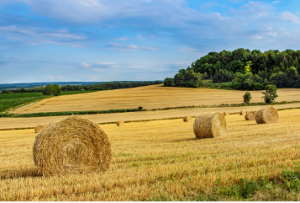Choosing the suitable baling twine is essential for the successful silage-making process. Whether you are using a high-tech baling machine or a traditional one, the twine you choose must meet several criteria:
- 1.It would be best if you chose twine with the proper weight and dimensions.
- It must also have a suitable meter-weight ratio. Baling twine with the correct weight can save time and effort during silage-making.
- The twine should have the proper resistance and elongation at breakage.
 Sisal twine
Sisal twine
Sisal twine is biodegradable, environmentally friendly, and comes in various colours, sizes, and strengths. It is often used for baling hay. It has excellent tensile strength, is biodegradable, and has no adverse effects on crops or the environment. However, some farmers are concerned about sisal twine’s rot potential, so they might want to consider another type of twine with more knot strength.
Sisal twine comes in various colours; some people use coloured twine to mark their bales. Sisal twine should be of good weight and length to avoid tearing and fraying. In addition, sisal twine is recommended to be U-V stabilized, which prevents the twine from degrading in the outdoor environment.
Sisal twine is made from a natural plant called Agave sisalana, similar to the yucca plant. It grows to three feet, with spear-shaped leaves and a central flowering stalk. The plant takes about five years to mature and produces the fibre used in sisal twine. It is then processed into matting, which is used in a variety of industries.
Twine made from sisal is cheaper than synthetic twine and takes less time to wrap a bale. However, it requires more work, so balers should calculate the twine cost before wrapping each bale. In calculating this cost, a baler can look up the twine cost for similar bales in their local area.
Synthetic twine
Synthetic baling twine is tough polypropylene with added bulk for better handling and performance. Synthetic twine is safe for hands and machinery parts and has high UV inhibitors. Here are a few advantages: Synthetic twine is durable, odour-free, and has excellent abrasion resistance.
The synthetic baling twine market research report covers various aspects of the industry, such as its growth potential, competitive scenario, and recent advancements. It also provides details about market size and forecasts. The report helps businesses to make sound decisions and capitalize on opportunities in the market. This market research report also covers the competitive landscape, which identifies critical players and helps them to plan their future course of action.
Twine is used in various types of baling jobs. The primary purpose of baling twine is to bind fibrous materials. The twine is available in different diameters, making it suitable for various baling tasks. Among them is the blue twine, designed for stacking big square bales.
Synthetic baling twine is made of thermoplastic synthetic resin. Its construction allows it to form single-loop knots in baling machines without slipping. Its manufacturing process involves heat-setting twine under tension. It can also be coated with granules of abrasive material.
Polypropylene twine
Polypropylene baling twine is a critical product used in the recycling and waste compacting industries. Tapex Industrial is one of the largest suppliers of polypropylene baling twine. Their products come in a variety of different ball sizes and break strengths. Check out our products to find the right type of twine for your particular needs.
Baling twine is made of high-quality polypropylene, and each roll has about 9,000 feet. These twines are compatible with most mini-round and square balers. To get the most out of your equipment, use quality baling twine. Make sure that the twine has the right weight and the suitable diameter.
Polypropylene baling twine is a versatile twine that offers a variety of benefits. It’s strong and flexible, can resist decay and mould growth, and can be dyed and granulated. The twine is also resistant to most acids and chemicals. As a result, polypropylene baler twine can be used to wrap various types of crops.
Depending on your needs, you can choose from several different colours of baling twine. Black is the most durable and is often used in high-solar-radiation climates. It is also available in different weights.
Various types of baling twine are used in agriculture. These materials are used to pack bales of feed for livestock. These twines can also be used to replace metal wire fences. They are a valuable asset for farmers, providing many advantages over traditional wires.
